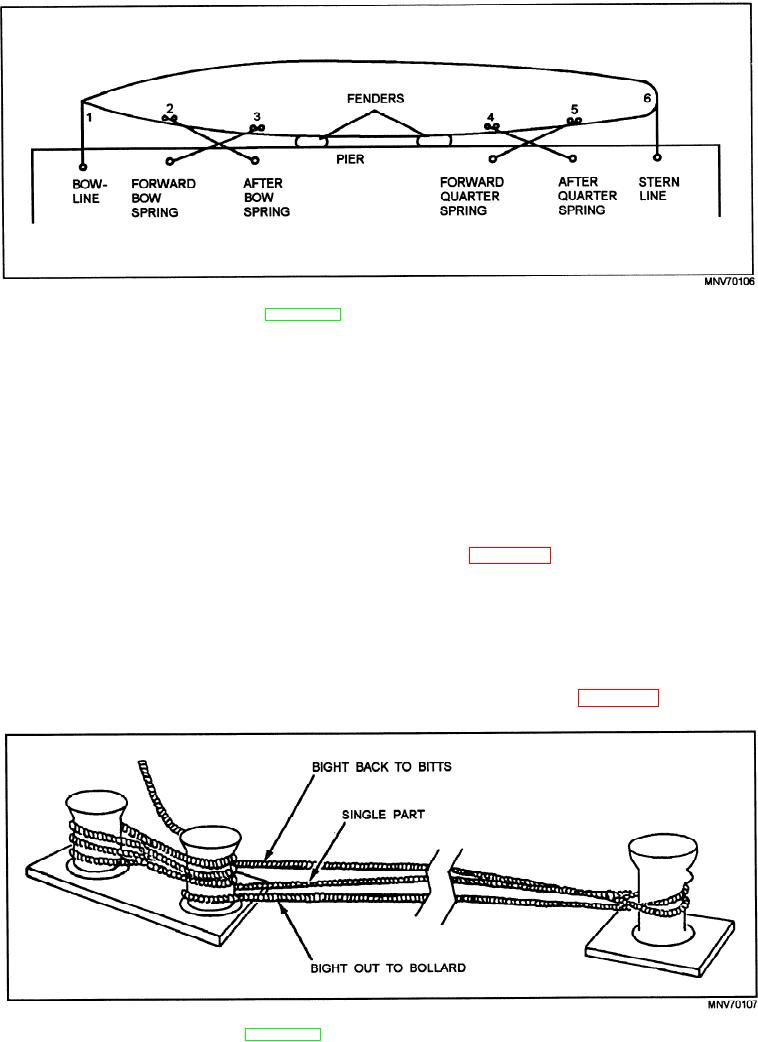
Figure 4-10.--Mooring lines of a ship.
Spring lines leading forward are the forward bow spring
a destroyer uses a 5-inch synthetic line, while a carrier
or the forward quarter spring. These lines keep the ship
uses an 8-inch synthetic line. In general, mooring lines
from going aft. Spring lines tending aft are the after bow
must satisfy two requirements. First, they must be as
spring or the after quarter spring. Their purpose is to
light as possible for ease in handling; and second, they
keep the ship from moving forward.
must be strong enough to take the strain of mooring,
getting underway, and holding the ship in heavy
The standard moor on most ships is six mooring
weather.
lines. These lines are numbered from forward to aft and
are called by number in line-handling evolutions
Mooring lines are named, according to their use, as
because numbers are shorter and more precise than
bowlines, stem lines, breast lines, or spring lines. The
bowline runs through the bullnose or chock nearest the
names. See figure 4-10. A ship may use fewer or more
lines as necessary, in which case the numbers are
eyes of the ship and holds the bow in. The stern line runs
changed accordingly. When the ship is in position and
through the stem chock or quarter chock, holding the
secure, the mooring lines are doubled up, which means
stem in. A breast line is led nearly straight across to the
that a bight of line is passed to the pier or to another ship,
pier, controlling the distance of the ship from the pier.
giving three parts of line. The bight is evened up with
Breast lines are called bow, waist, or quarter breasts. A
the single part of line so that each of the three parts is
spring line leads at an angle of about 45 degrees from
taking an equal strain. See figure 4-11.
the ship to the pier and controls fore-and-aft movement.
Figure 4-11.--Correct method of doubling up.
4-11

